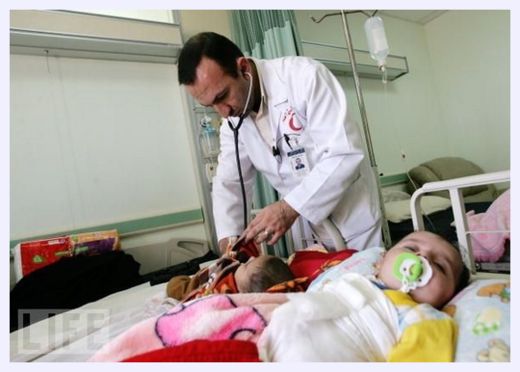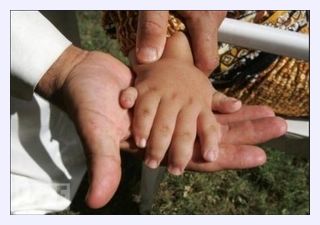
Is the U.S. war in Iraq behind an increase of severe birth defects in Fallujah?
That's the question raised by new research co-authored by an Ann Arbor resident and published in the International Journal of Environmental Health.
"Lots of babies are dying in Fallujah," said environmental toxicologist Mozhgan Savabieasfahani. "Those who don't die have a grim future. Their parents aren't able to care about them."
The study authors theorize that military assaults in Fallujah left a toxic footprint that could be continuing to harm families there, especially pregnant mothers and their babies, some of whom are being born with severe deformities and other problems.
Savabieasfahani, author of the 2009 book Pollution and Reproductive Damage, joined the international research team working on the study after she saw Fallujah General Hospital doctor Samir Allani on BBC news reports about the birth defects. Allani was interviewed by the BBC about birth defects and cancer in the Iraqi city following heavy U.S. assaults in 2004 aimed at stamping out out an insurgency.
The latest study, funded by The Kuala Lumpur Foundation to Criminalize War, focuses on birth defects observed at the hospital since 2003. International media outlets, including the BBC World and others, have published reports on the Ann Arbor resident's research since the journal published the paper Dec. 31.
In May, 2010, 15 percent of 547 babies born at the hospital had severe birth defects. "This is in contrast to 2 to 4 percent that is normal in human population," Savabieasfahani said.
During other months in 2010, babies being born with birth defects have been observed at rates as high as 30 percent, Savabieasfahani said.
Lacking comprehensive birth records for the town, study authors took detailed reproductive histories from four families to create a snapshot of births in Fallujah before and after 2004 U.S. assaults.
Of the four families surveyed, none had reported deformities or childhood cancers before 2003, with the exception of one case of childhood leukemia.

Babies showed a higher-than-average number of both congenital heart defects and neural tube defects like spina bifida, a serious birth defect that occurs when the neural tube - the part of the embryonic structure that will become the baby's brain - doesn't close properly, causing a host of serious complications.
Savabieasfahani said that while the study shows a high incidence of birth defects, more research is needed into the sources of suspected environmental contaminants. She wants interested parties to contact her if they would like to help with future research.
"We have to find out what the source of it is," she said "To find the source, we need the support of scientists, of institutions. This is a global health crisis. It's a global health issue and it needs to be addressed."
Howard Hu, chairman of the Department of Environmental Health Sciences in the University of Michigan School of Public Health, said in an e-mail, that while the study seeks to show a problem with birth defects, it leaves unanswered the question of whether the environment is contributing to them.
Authors suspect metal contaminants are playing a part in the high rate of birth defects, though the environment was not studied. The researchers honed in on depleted uranium as an example of a war contaminant, but noted various war contaminants can potentially interfere with normal embryonic and fetal development. Among them are dioxins, the major contaminant of Agent Orange that had "devastating reproductive health effects" on the Vietnamese following the Vietnam War.
"As environmental effectors, metals are potential good candidates to cause birth defects," the paper states. "Metals are also integral to modern ... weapons. Metals, which are toxicants at relatively low concentrations, are highly persistent in the environment and in the body of exposed individuals, where they accumulate."
Juliana Keeping is a health and environment reporter for AnnArbor.com. Reach her at julianakeeping@annarbor.com or 734-623-2528. Follow Juliana Keeping on Twitter



Reader Comments
to our Newsletter